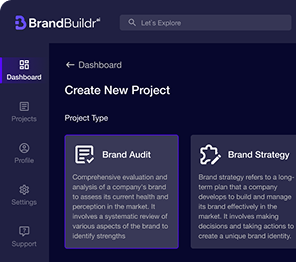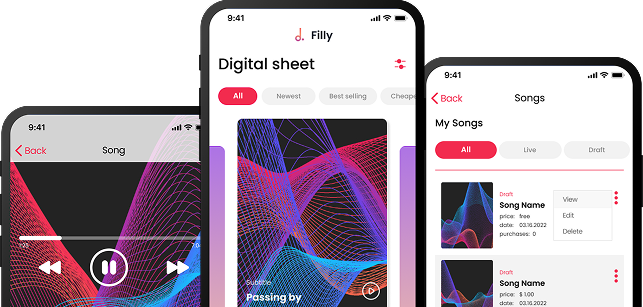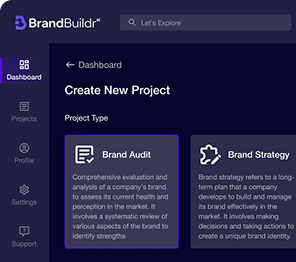Mobile app development has experienced rapid growth over the past decade, and two frameworks stand out as popular choices for building cross-platform applications: Flutter and React Native. These frameworks have enabled developers to create apps that run seamlessly on both Android and iOS devices with a single codebase, reducing time and cost compared to native development.
As we look toward 2025, choosing the right framework for your app can be crucial for performance, user experience, and long-term scalability. In this article, we will dive deep into the comparison of Flutter and React Native, analyzing their features, strengths, weaknesses, and suitability for different types of projects.

1. Introduction to Flutter and React Native
a. What is Flutter?
Flutter is an open-source UI toolkit developed by Google, launched in 2017. It allows developers to build natively compiled applications for mobile, web, and desktop from a single codebase. Flutter uses Dart, a programming language designed to optimize the performance of UI-heavy applications.
Flutter is known for its widget-based architecture, which provides developers with pre-designed components and customizable widgets to build responsive and visually appealing user interfaces.
b. What is React Native?
React Native, introduced by Facebook in 2015, is an open-source framework that allows developers to build mobile applications using JavaScript and React. It enables developers to create truly native apps by using platform-specific APIs, while still maintaining the flexibility of a shared codebase.
React Native's ability to leverage existing JavaScript libraries and tools makes it an appealing choice for developers familiar with the React ecosystem.
2. Performance Comparison
Performance is a critical factor when selecting a mobile app development framework. Both Flutter and React Native are optimized for cross-platform development, but they differ in how they render UI elements and handle performance.
a. Flutter’s Performance
Flutter is renowned for its exceptional performance, largely due to its use of Dart and its direct compilation to native ARM code for both iOS and Android. Flutter avoids the use of a JavaScript bridge, reducing performance bottlenecks and enhancing the speed of rendering.
The Skia graphics engine used in Flutter allows it to deliver smooth animations, transitions, and highly interactive user interfaces. The consistent 60fps performance in Flutter apps is one of the reasons it’s often chosen for performance-heavy applications, such as games or applications with advanced graphical interfaces.
b. React Native’s Performance
React Native also provides good performance, but it relies on the JavaScript bridge to communicate with native components. This can introduce a slight performance lag, especially for applications requiring complex animations or processing heavy data.
However, React Native has steadily improved in performance over the years. With the introduction of Hermes, an open-source JavaScript engine optimized for React Native, app start-up times and memory consumption have significantly improved. React Native's performance is generally sufficient for most business apps but may fall behind Flutter in high-performance scenarios.
3. Development Experience
The developer experience is essential for determining how quickly and efficiently apps can be built, tested, and maintained. Both Flutter and React Native provide features that enhance the development workflow, but they differ in language, tooling, and libraries.
a. Flutter’s Developer Experience
Flutter uses the Dart programming language, which might present a learning curve for developers who are not familiar with it. However, once mastered, Dart allows for faster development with features like hot reload, which lets developers instantly see changes without restarting the entire app.
Flutter's robust documentation and comprehensive widget library make it easier for developers to create complex UIs without the need for third-party libraries. The out-of-the-box components are highly customizable, allowing for flexibility in design.
On the downside, Dart's ecosystem is smaller compared to JavaScript, and developers may need to spend more time searching for packages or libraries that meet specific needs.
b. React Native’s Developer Experience
React Native leverages the widespread knowledge of JavaScript and React, making it a natural choice for developers already familiar with these technologies. The large JavaScript ecosystem provides access to a vast range of libraries, plugins, and tools, reducing development time and effort.
Like Flutter, React Native offers hot reloading, speeding up the development cycle. One advantage React Native has is the ease of integration with third-party services, thanks to JavaScript's ubiquity.
However, React Native can sometimes require additional effort when dealing with platform-specific code, especially when implementing complex native features. Developers might need to write native modules in Java or Swift to access features that are not available in React Native by default.

4. UI and Customization
The visual appeal and customization of your app's UI can significantly impact user engagement and satisfaction. Flutter and React Native both allow for beautiful and responsive designs, but their approaches to UI development differ.
a. Flutter’s UI and Customization
Flutter excels in UI customization due to its widget-based architecture. Every element in a Flutter app is a widget, which can be customized extensively. Flutter comes with a vast collection of pre-designed widgets for Material Design (Android) and Cupertino (iOS), allowing for consistent design across platforms.
Since Flutter renders UI components directly on the Skia graphics engine, it provides complete control over every pixel on the screen. This makes it ideal for developers who want to create highly tailored, dynamic UIs without worrying about platform-specific limitations.
b. React Native’s UI and Customization
React Native uses native UI components, which means that it adheres closely to the design guidelines of each platform. While this helps achieve a more "native" look and feel, it also limits the extent of customization.
To create custom UIs in React Native, developers often rely on third-party libraries or write platform-specific code, which can add complexity to the project. While the framework is capable of delivering great UIs, it may not offer the same level of flexibility as Flutter when it comes to advanced design elements and animations.
5. Community and Ecosystem
The size and engagement of a framework's community can play a crucial role in its long-term success. Both Flutter and React Native have active communities, but they differ in their maturity and resources.
a. Flutter’s Community and Ecosystem
Flutter’s community is rapidly growing, and its adoption by major companies like Google, Alibaba, and BMW speaks to its increasing popularity. Google's strong backing ensures regular updates and continuous improvements, which adds confidence in Flutter's long-term viability.
That said, Flutter's ecosystem is relatively younger than React Native's. While there are plenty of third-party packages available, the selection may not be as extensive as JavaScript's ecosystem, leading developers to occasionally build custom solutions.
b. React Native’s Community and Ecosystem
React Native benefits from the massive JavaScript and React communities, making it easier to find resources, tutorials, and third-party libraries. React Native's community is mature, with a wealth of open-source packages that can accelerate development.
Additionally, React Native has been adopted by companies like Facebook, Instagram, Walmart, and Tesla, further solidifying its place in the industry.

6. Cost of Development
Cost is always a key consideration in app development. Both Flutter and React Native offer cost-efficient solutions compared to native app development since they allow for a single codebase that can run on multiple platforms.
a. Flutter’s Development Costs
Flutter reduces development costs by enabling developers to use a single codebase for Android, iOS, web, and desktop apps. The speed of development is enhanced by features like hot reload and a comprehensive widget library, which minimizes the need for third-party plugins.
However, Flutter developers with expertise in Dart may be harder to find than React Native developers, potentially increasing labor costs.
b. React Native’s Development Costs
React Native's use of JavaScript, one of the most widely used programming languages, makes it easier to find skilled developers, which can reduce labor costs. The large ecosystem of tools and libraries also contributes to faster and more cost-effective development.
That said, some projects may require writing platform-specific code, which could increase both development time and cost compared to Flutter.

7. Which Framework is Best for 2024?
Choosing between Flutter and React Native ultimately depends on your project requirements, timeline, and developer resources.
- Choose Flutter if: You need high-performance, visually rich applications with smooth animations and a consistent UI across platforms. Flutter is ideal for startups and businesses looking for fast prototyping and high customization.
- Choose React Native if: Your team already has JavaScript experience, or you need to integrate your app with web-based or existing JavaScript tools. React Native is a good choice for business apps where native look and feel are essential but not performance-heavy.
In 2025, choosing between Flutter and React Native means balancing performance, scalability, and user experience to create powerful cross-platform apps.
Conclusion
Both Flutter and React Native have proven themselves as powerful cross-platform development frameworks. Each has its strengths and trade-offs, and the decision between them depends on the specific needs of your app, the expertise of your development team, and the goals you have for scalability and user experience.
In 2025 and beyond, as both frameworks continue to evolve, it's clear that whether you choose Flutter or React Native, you will be leveraging some of the best tools available for modern mobile app development.
Heading 1
Heading 2
Heading 3
Heading 4
Heading 5
Heading 6
Lorem ipsum dolor sit amet, consectetur adipiscing elit, sed do eiusmod tempor incididunt ut labore et dolore magna aliqua. Ut enim ad minim veniam, quis nostrud exercitation ullamco laboris nisi ut aliquip ex ea commodo consequat. Duis aute irure dolor in reprehenderit in voluptate velit esse cillum dolore eu fugiat nulla pariatur.
Block quote
Ordered list
- Item 1
- Item 2
- Item 3
Unordered list
- Item A
- Item B
- Item C
Bold text
Emphasis
Superscript
Subscript





















.avif)



.avif)

.avif)


